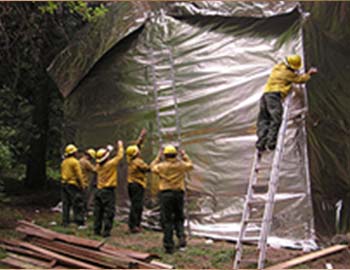The Last Best Chance To Save Your Home or Cabin from Wildfire
Firefighters choose to face life threatening danger, incredibly hard work, and heat exhaustion to save lives and homes. But in every major fire, there too many fires and not enough resources to be everywhere when they are needed.
Firezat supplies the US Forest Service and other professional firefighting agencies its reusable Fire Shields to protect historical and high value national treasures when there aren’t enough resources, or its too dangerous to leave a crew behind to protect. Fire Shields are reusable, need no water, no power, and can be installed and left up indefinitely.
It’s the last best thing you can do to protect your family home or cabin from wildfires.







